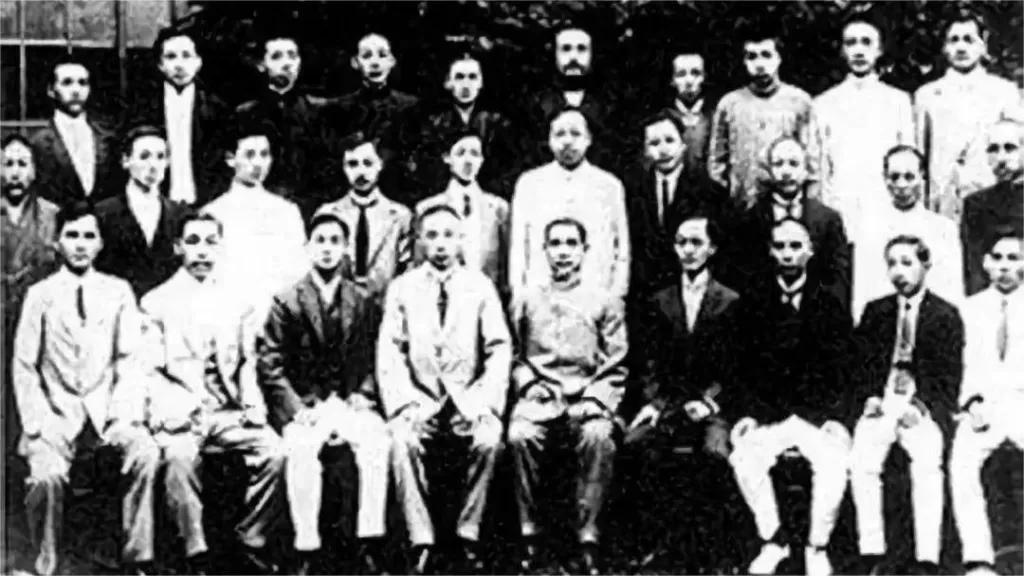War Sun Yat-sen ein Kommunist?


Sun Yat-sen, also known as Sun Zhongshan, was a prominent Chinese revolutionary and political leader in the late 19th and early 20th centuries. While he played a pivotal role in the Chinese Communist Party’s early development, he was not a communist himself. Sun’s ideology and political beliefs evolved over time, leading him to adopt a different path than communism.
Sun Yat-sen was born in 1866 in Guangdong, China, during a time when the country was facing immense challenges, including internal strife, corruption, foreign domination, and social unrest. Witnessing China’s decline and the growing influence of Western powers, he became determined to bring about fundamental political and social reforms to modernize the nation and rid it of the oppressive Qing dynasty.
In 1905, Sun established the Tongmenghui (Chinese Revolutionary Alliance), a revolutionary organization aimed at overthrowing the Qing government and establishing a republic. The Tongmenghui was instrumental in coordinating various revolutionary activities across China and in overseas Chinese communities.
At the time of the Russian Revolution in 1917, the Communist Party of China (CPC) was formed, influenced by Marxist-Leninist ideas. The CPC sought to establish a proletarian revolution to create a communist state in China. However, Sun Yat-sen’s vision was different. He was more focused on the Three Principles of the People: nationalism, democracy, and people’s livelihood.
Nationalism aimed at overthrowing the Qing dynasty and ending foreign domination, seeking to unite China as a single nation. Democracy emphasized the establishment of a representative government, providing the people with political participation and individual rights. People’s livelihood centered around improving the economic conditions of the common people and reducing poverty.
In 1921, the CPC sought cooperation with the Kuomintang (KMT), the successor to the Tongmenghui, to work together in the revolutionary cause. Sun Yat-sen even called for an alliance between the KMT and CPC in his First United Front, which aimed to unite various factions to counter the warlords and promote national unity.
While the alliance between the KMT and CPC faced challenges and periods of conflict, Sun Yat-sen maintained his non-communist stance, advocating for a government that included representation from all social classes, including the bourgeoisie, which clashed with the communist vision of a dictatorship of the proletariat.
Sun Yat-sen’s death in 1925 marked a turning point in Chinese politics. The leadership of the KMT eventually passed to Chiang Kai-shek, who adopted a more conservative and anti-communist stance. This led to further tensions and, ultimately, a split between the KMT and CPC, culminating in the Chinese Civil War.
In conclusion, while Sun Yat-sen was a significant figure in the early history of the Chinese Communist Party due to his role in the establishment of the Tongmenghui and his efforts to cooperate with the CPC, he was not a communist himself. Sun’s ideological framework focused on the Three Principles of the People, emphasizing nationalism, democracy, and people’s livelihood, rather than the principles of Marxism-Leninism that defined communism. His legacy lies in his contributions to the foundation of the Republic of China and his attempts to bring about progressive reforms in China during a tumultuous period in its history.
Weitere Fakten über Sun Yat-sen
- Das vielschichtige und bleibende Vermächtnis von Sun Yat-sen
- War Sun Yat-sen ein guter Führer?
- Wie ist Sun Yat-sen gestorben?
- Was hatte Sun Yat-Sen erreicht?
- Die Ideologie von Sun Yat-Sen - Drei Prinzipien des Volkes